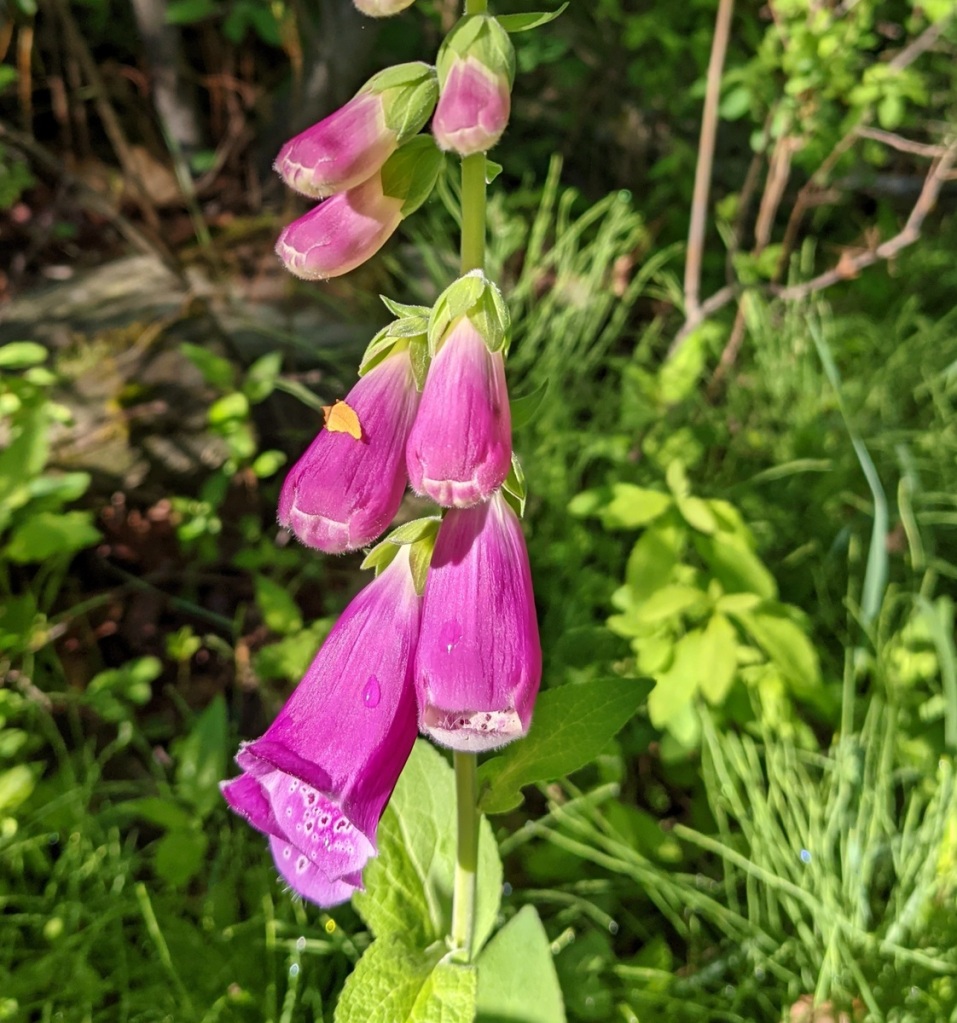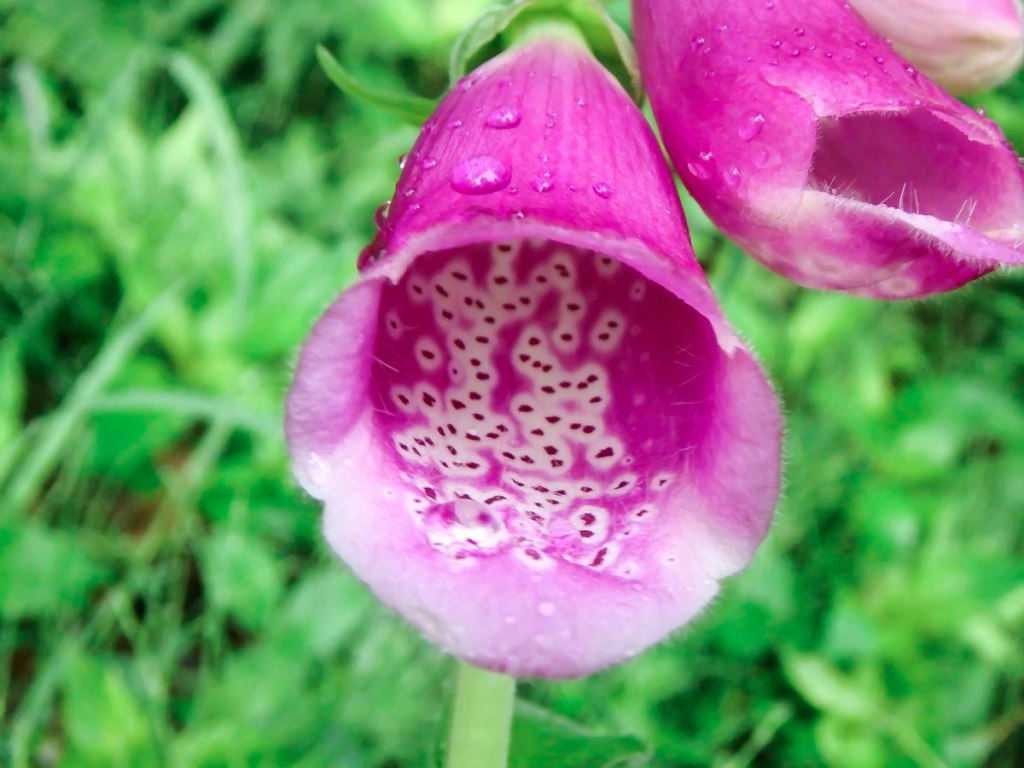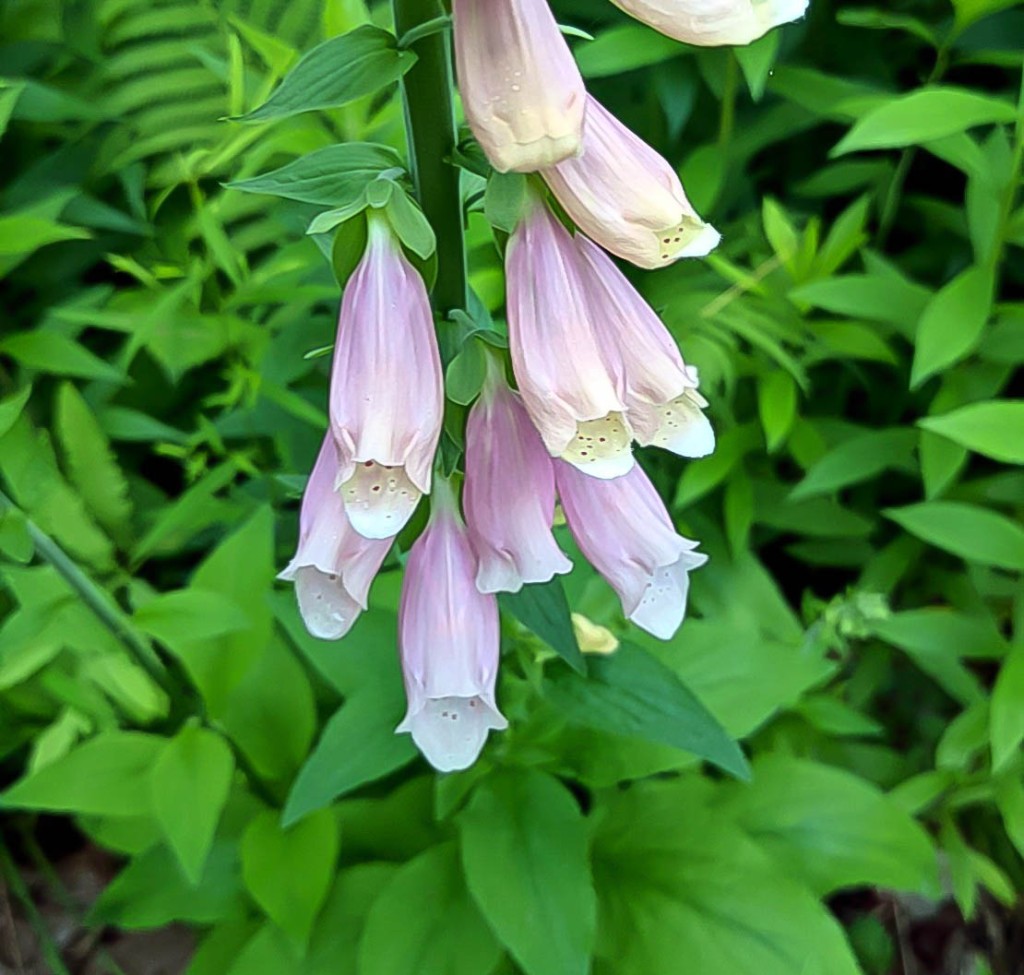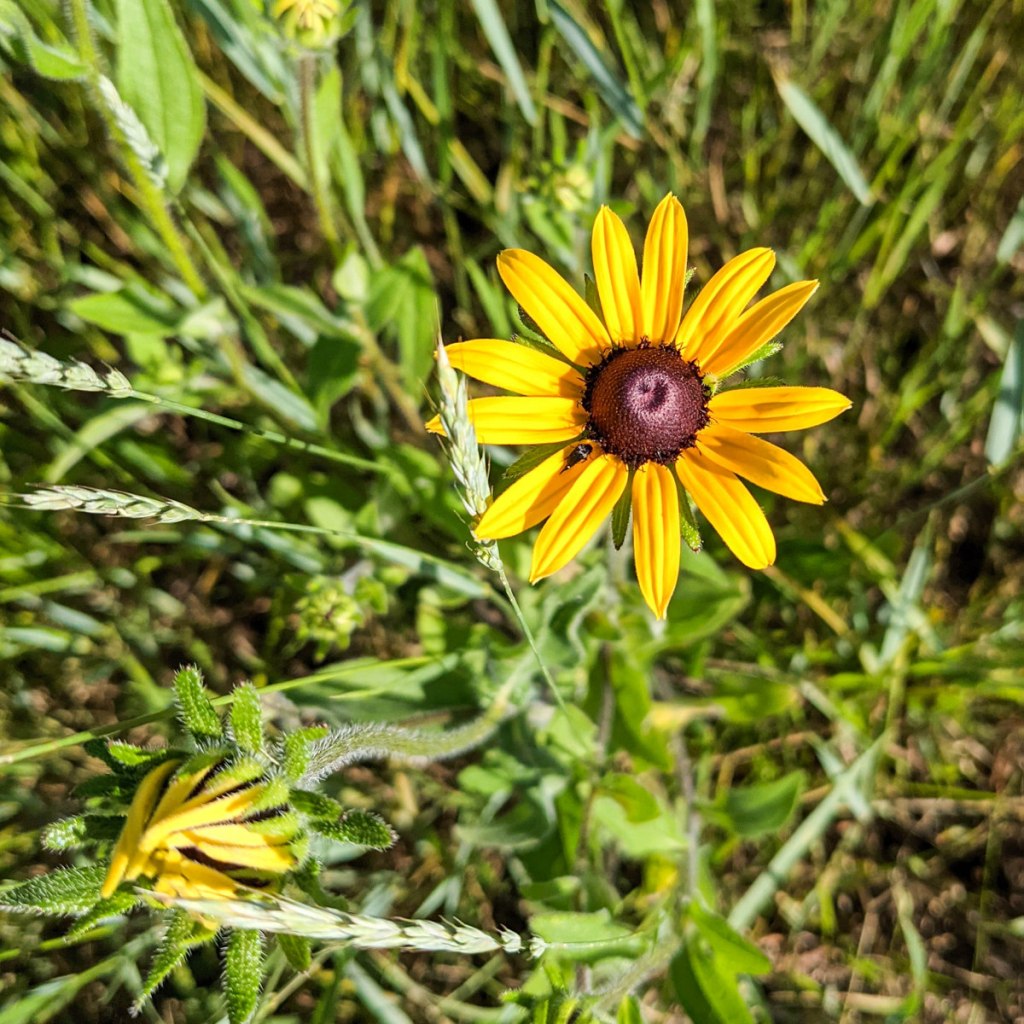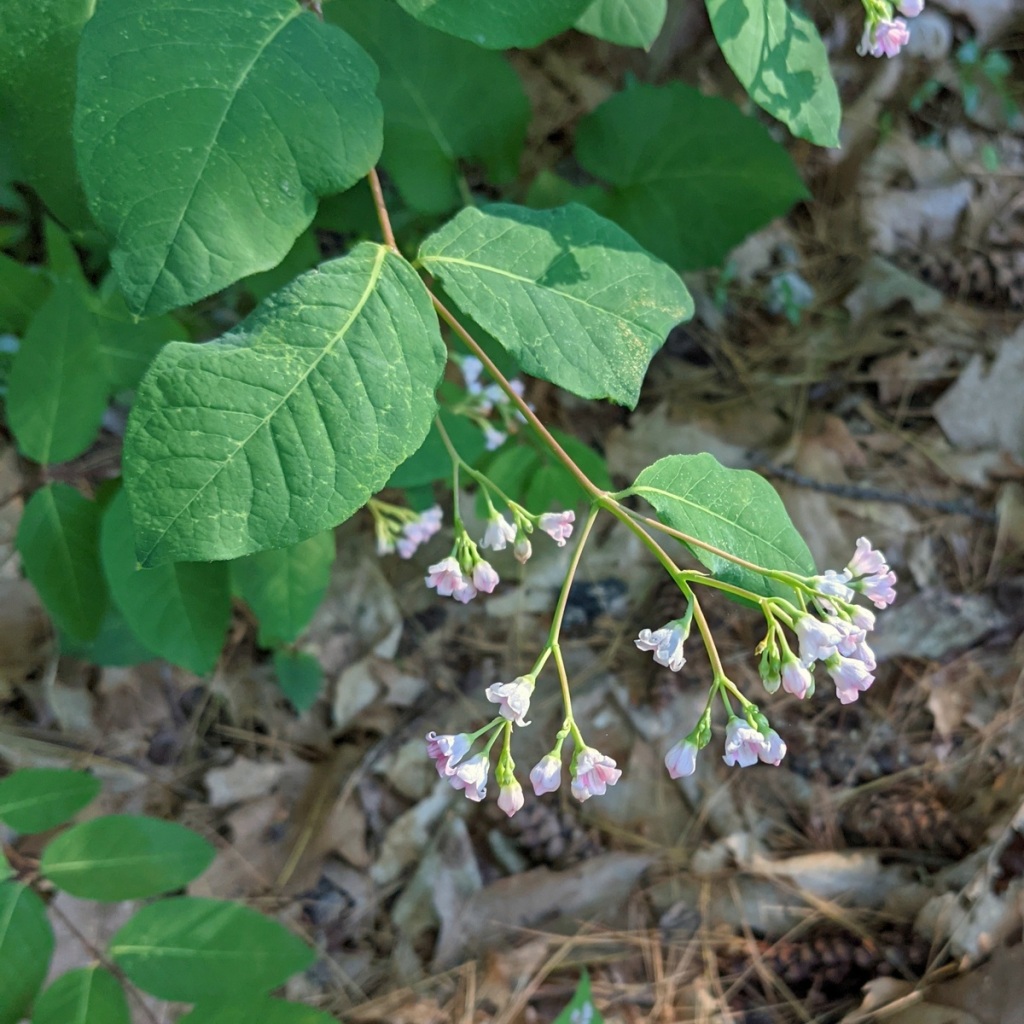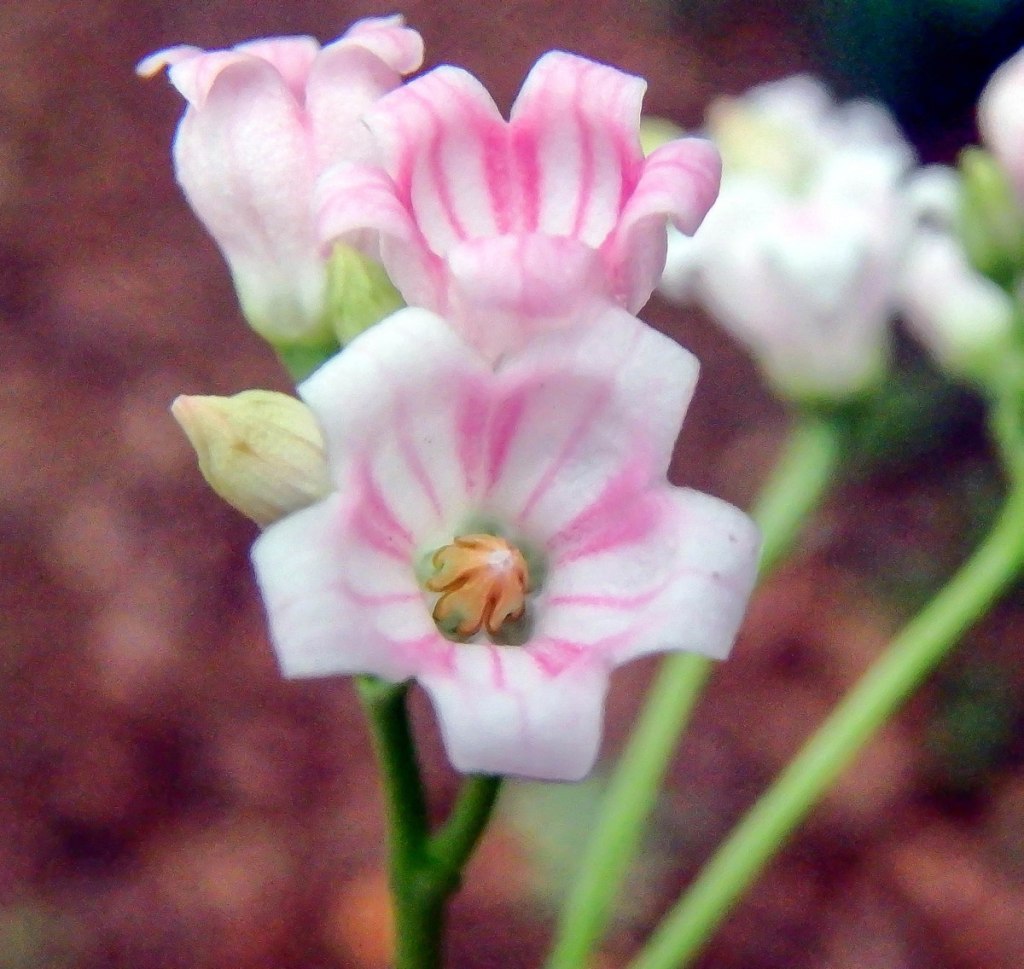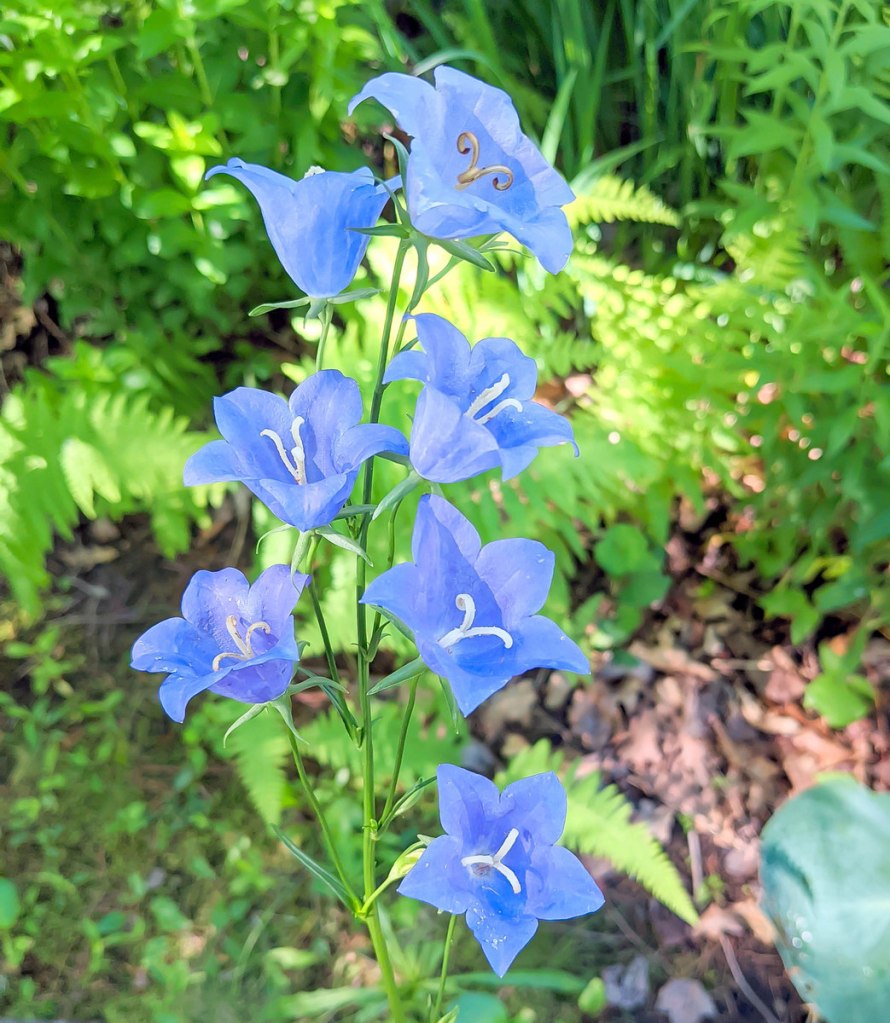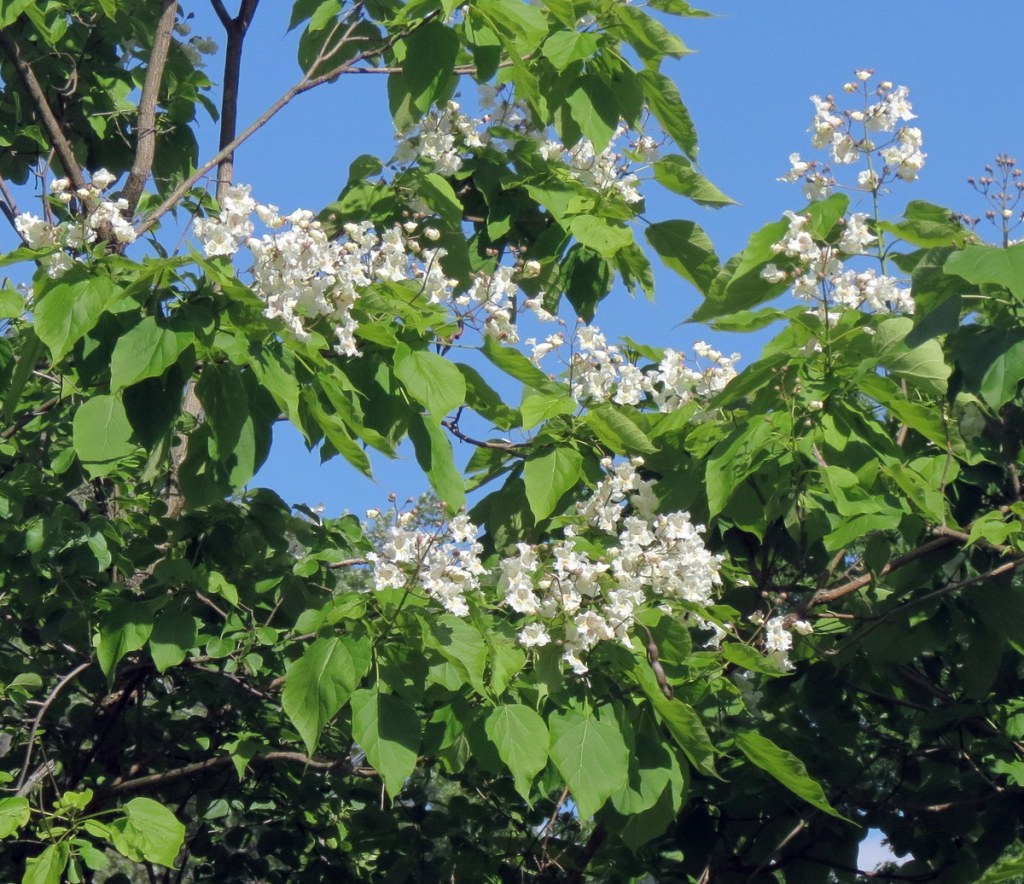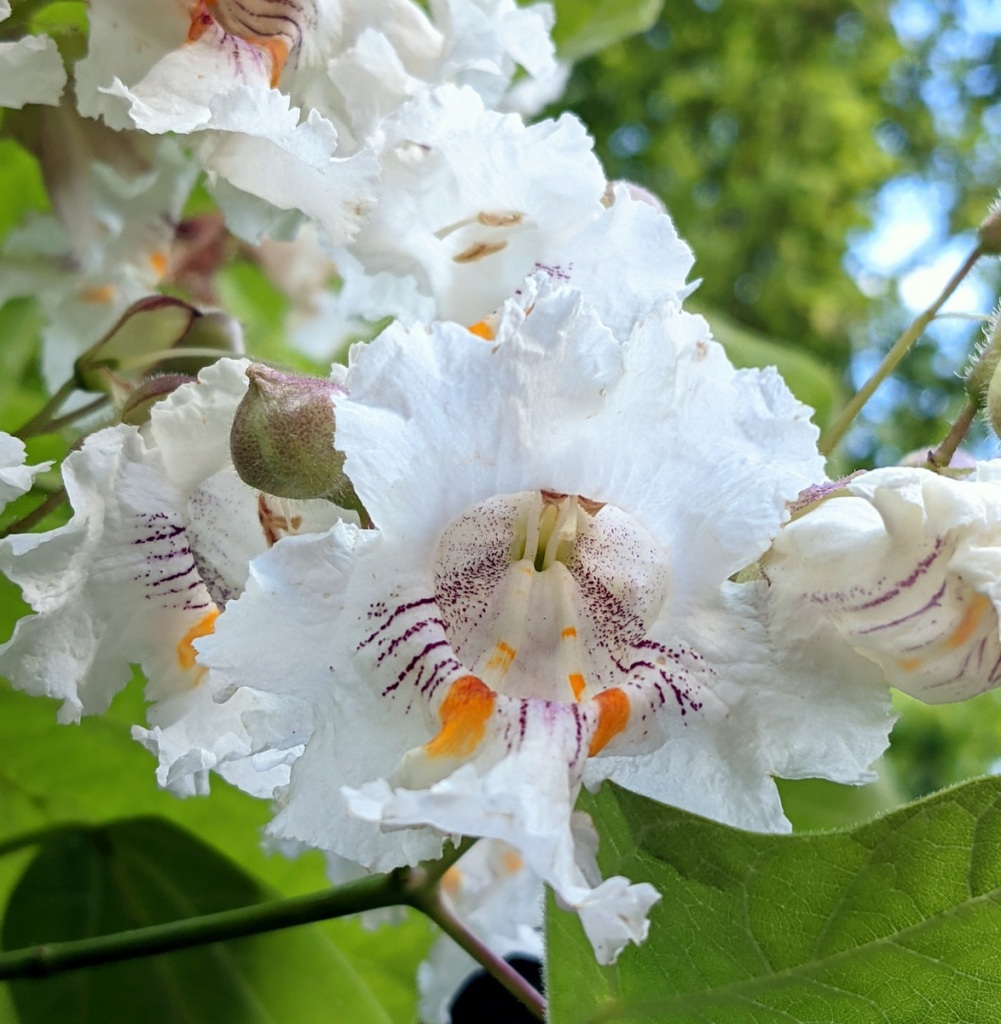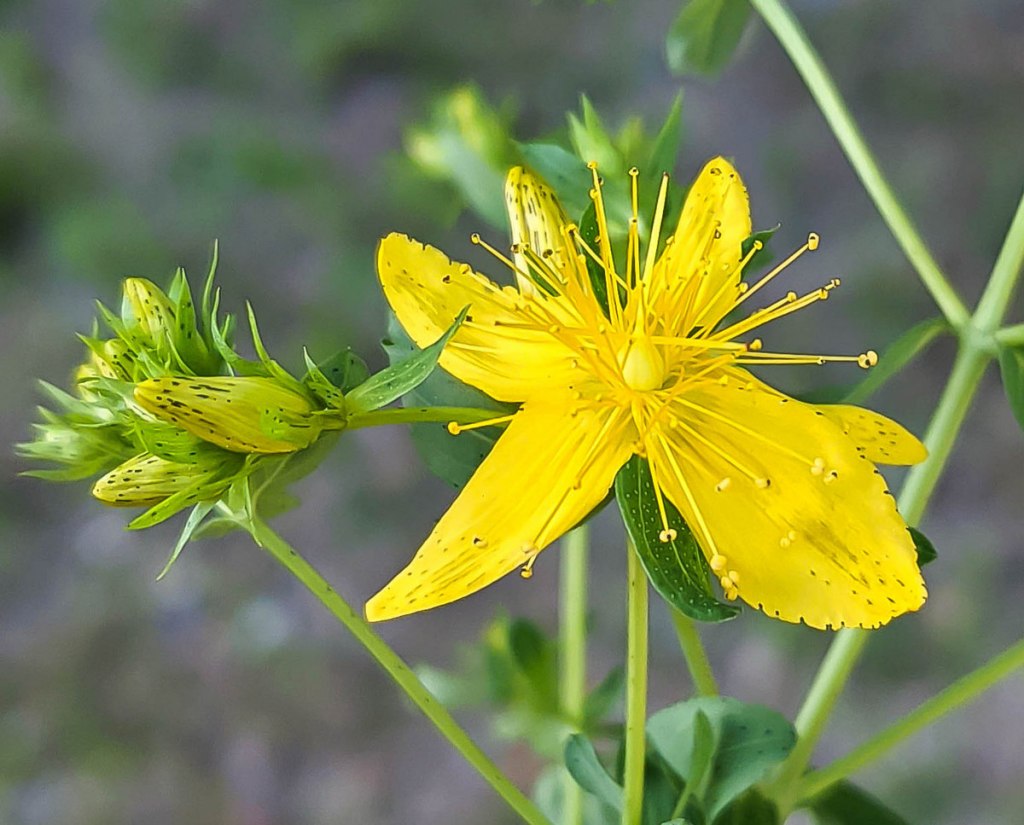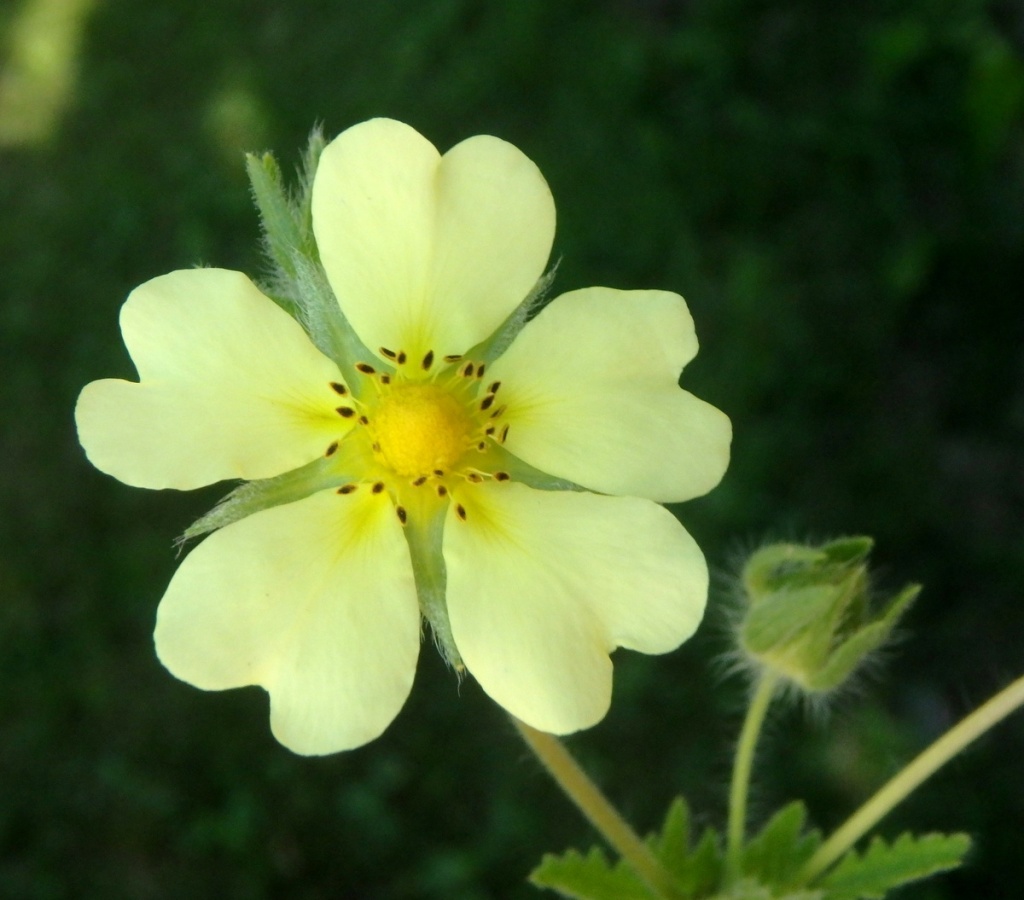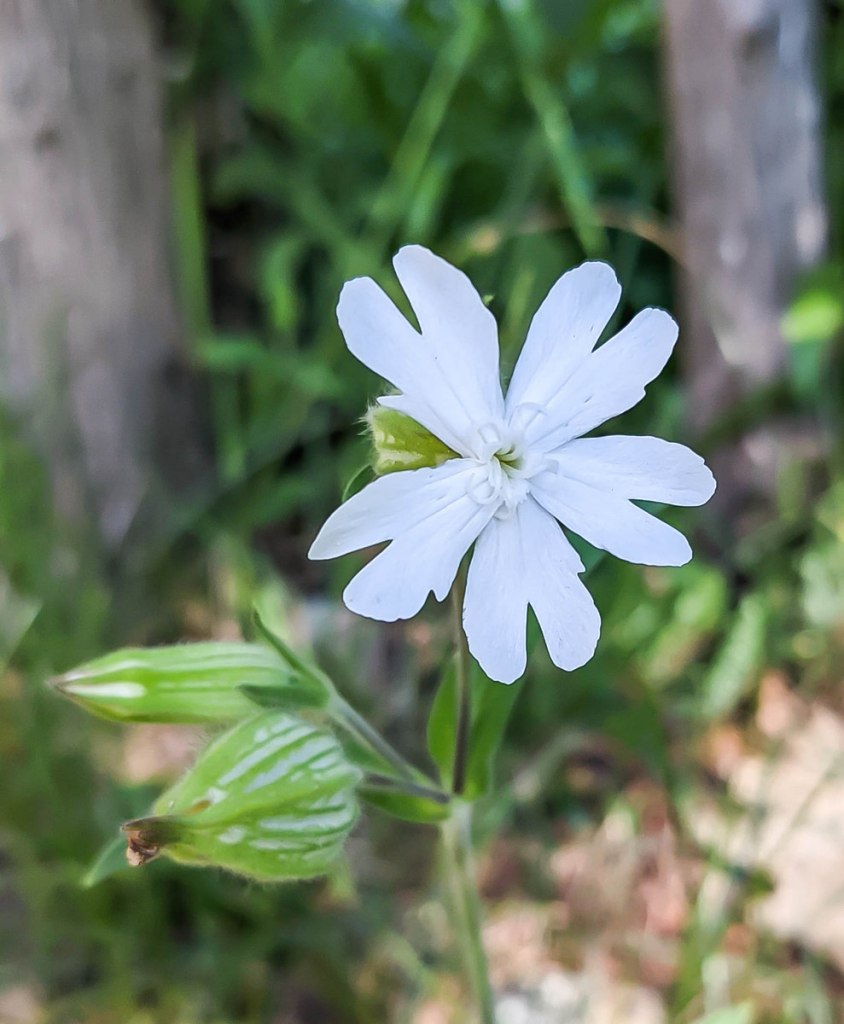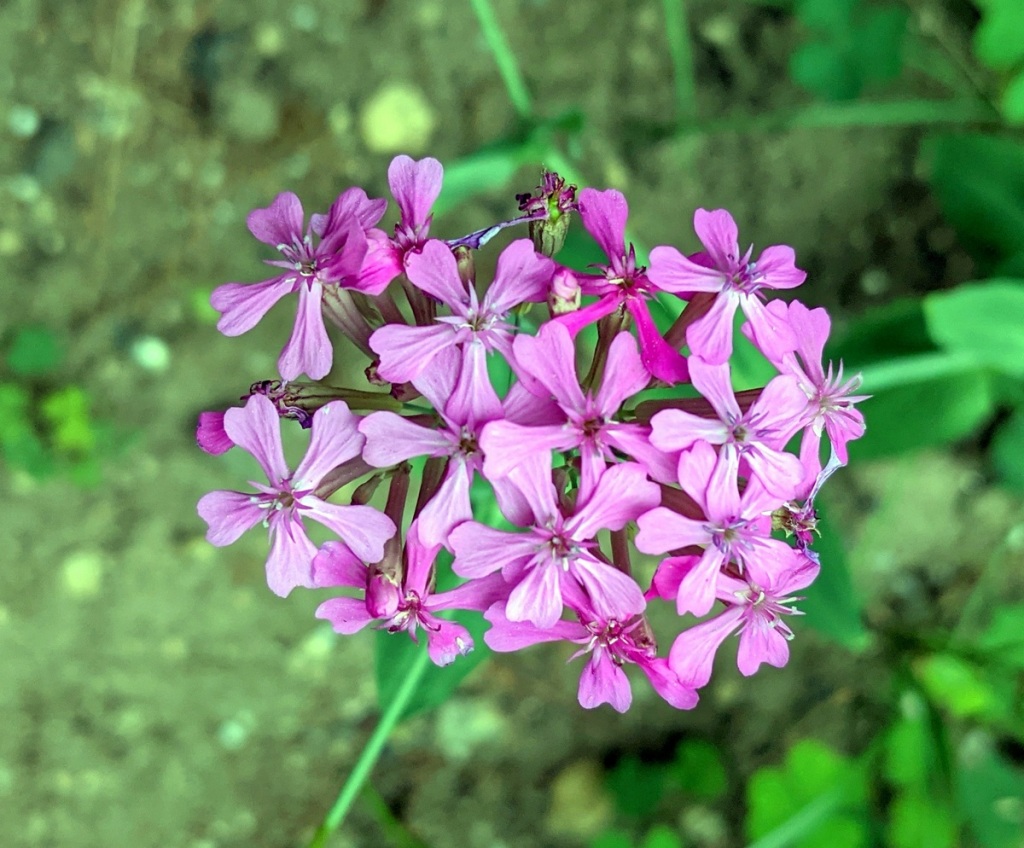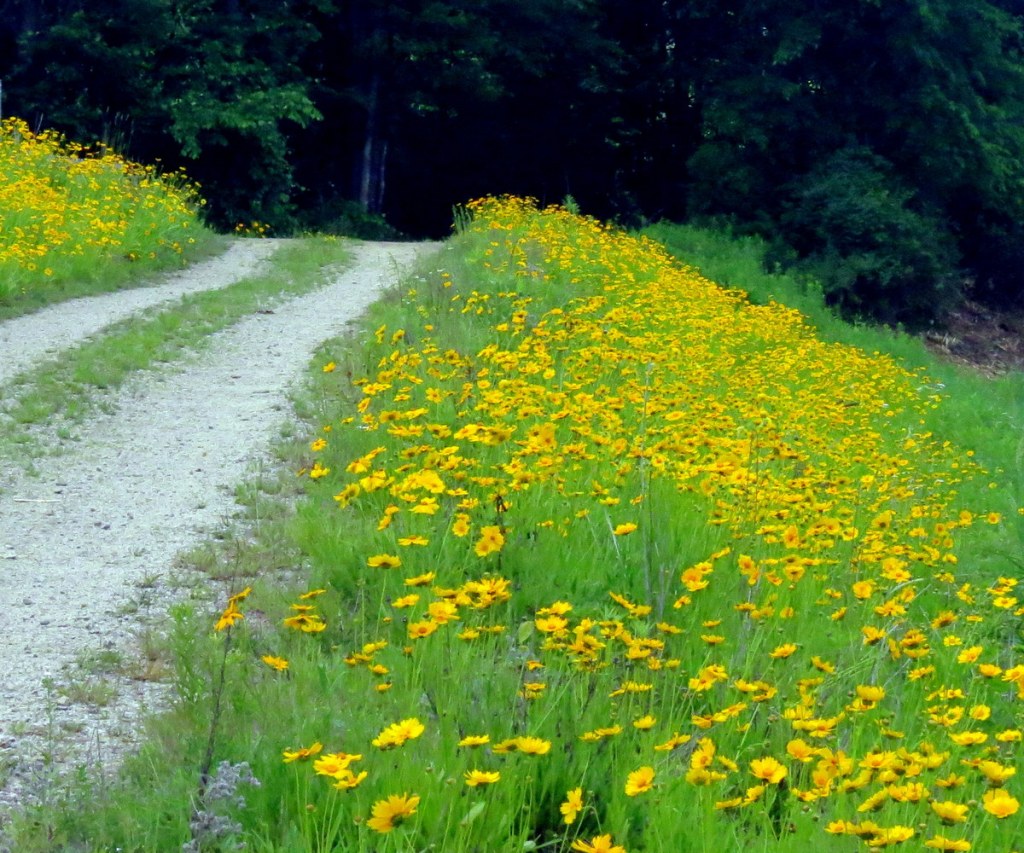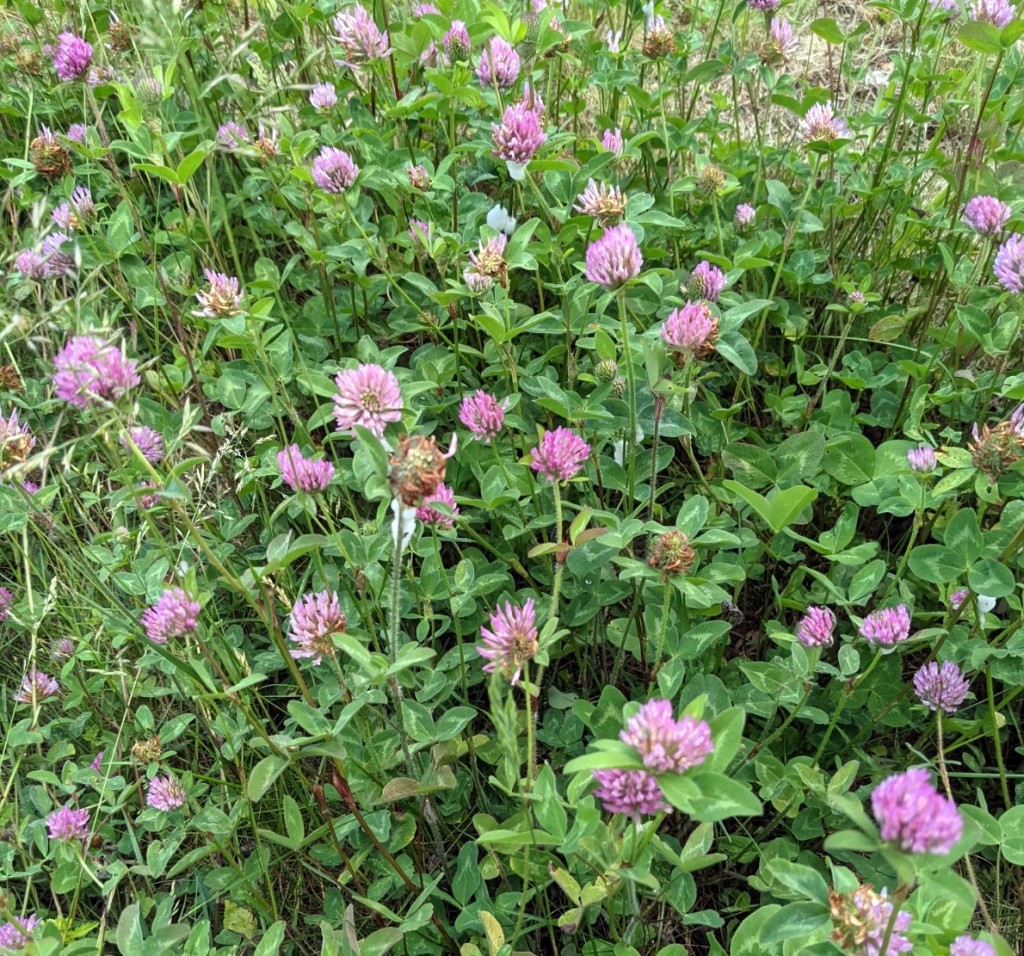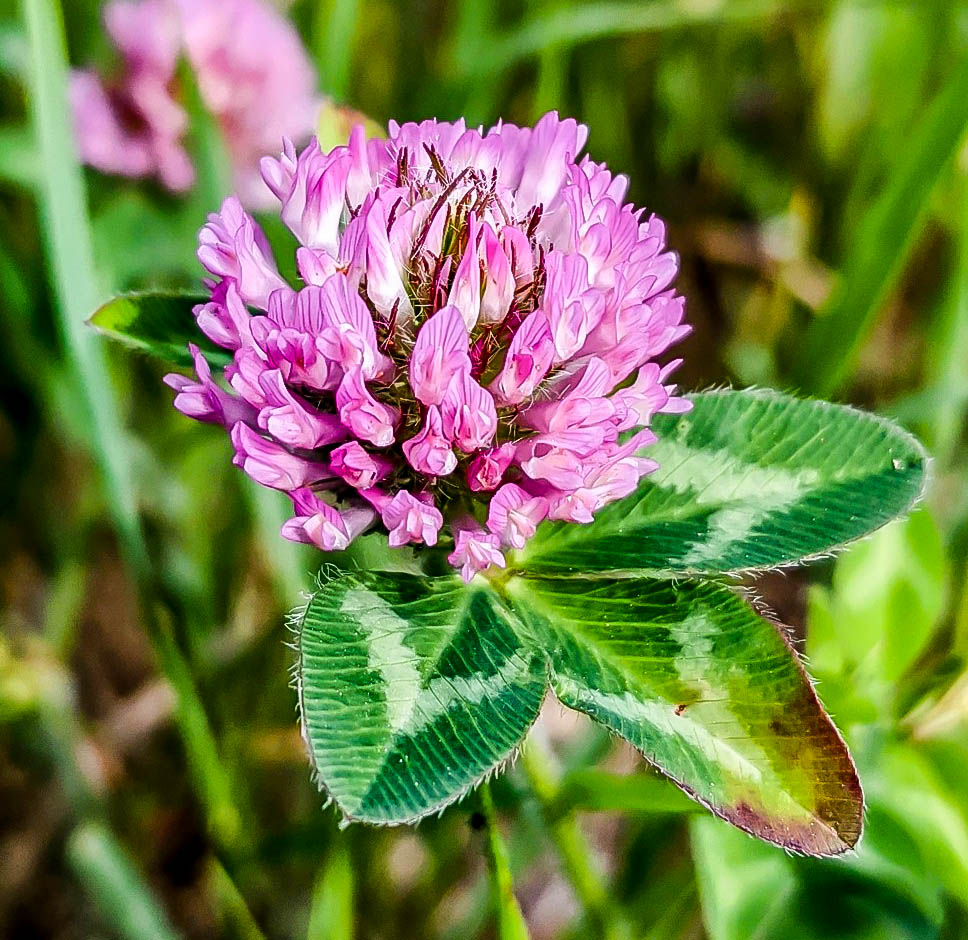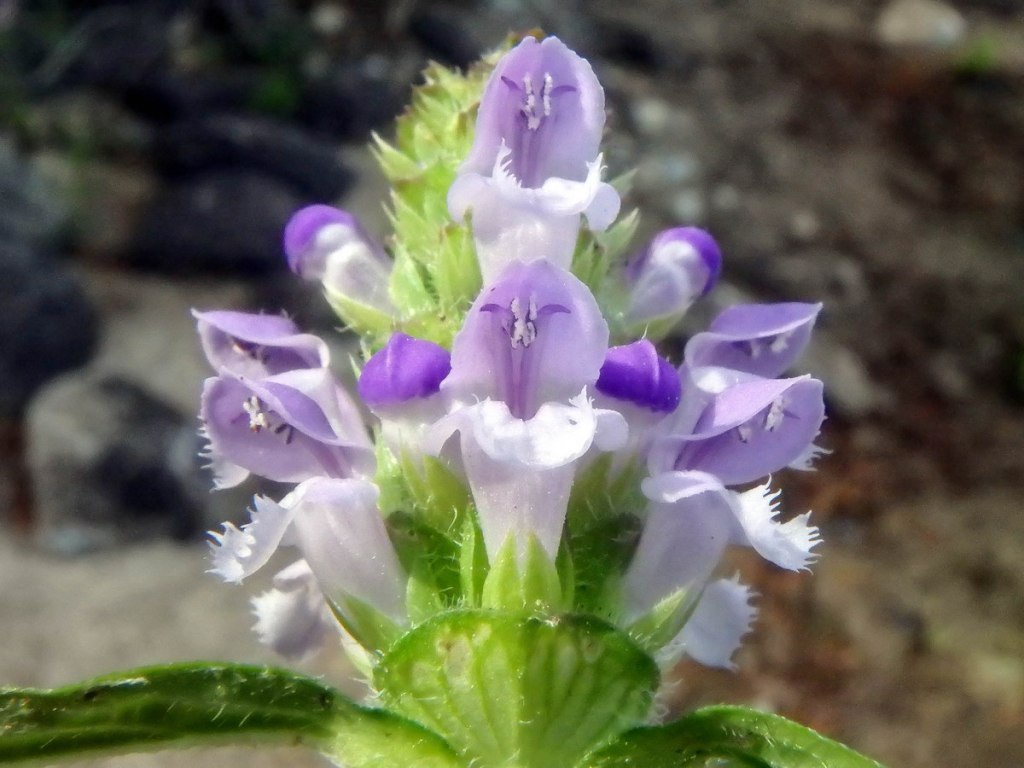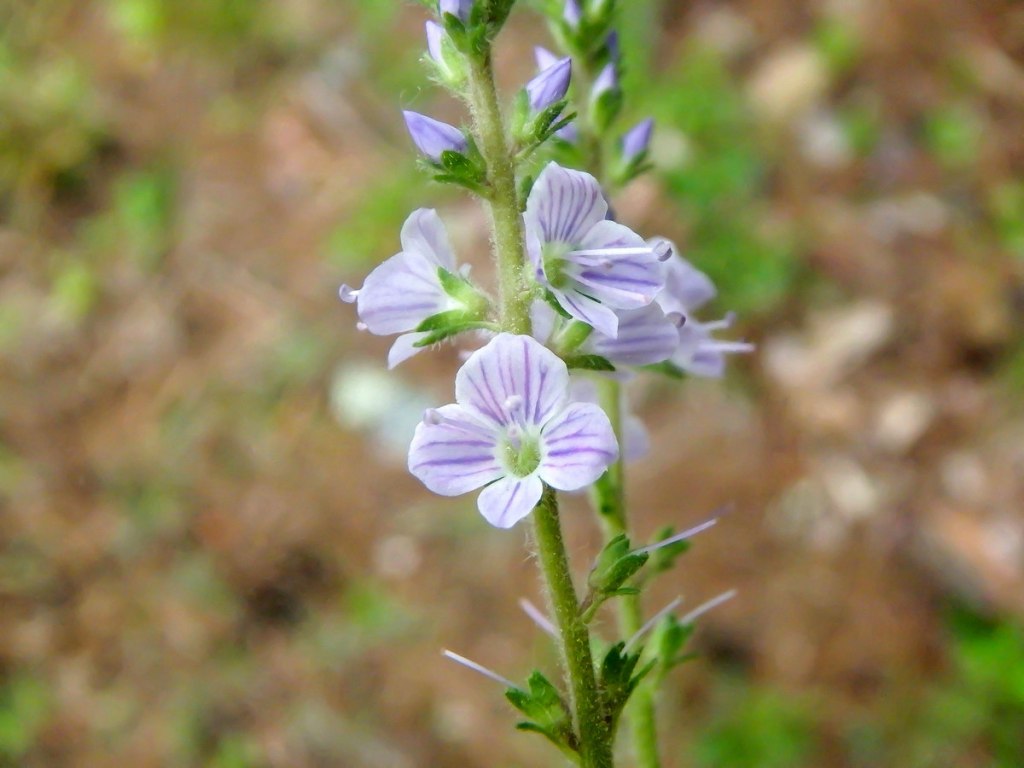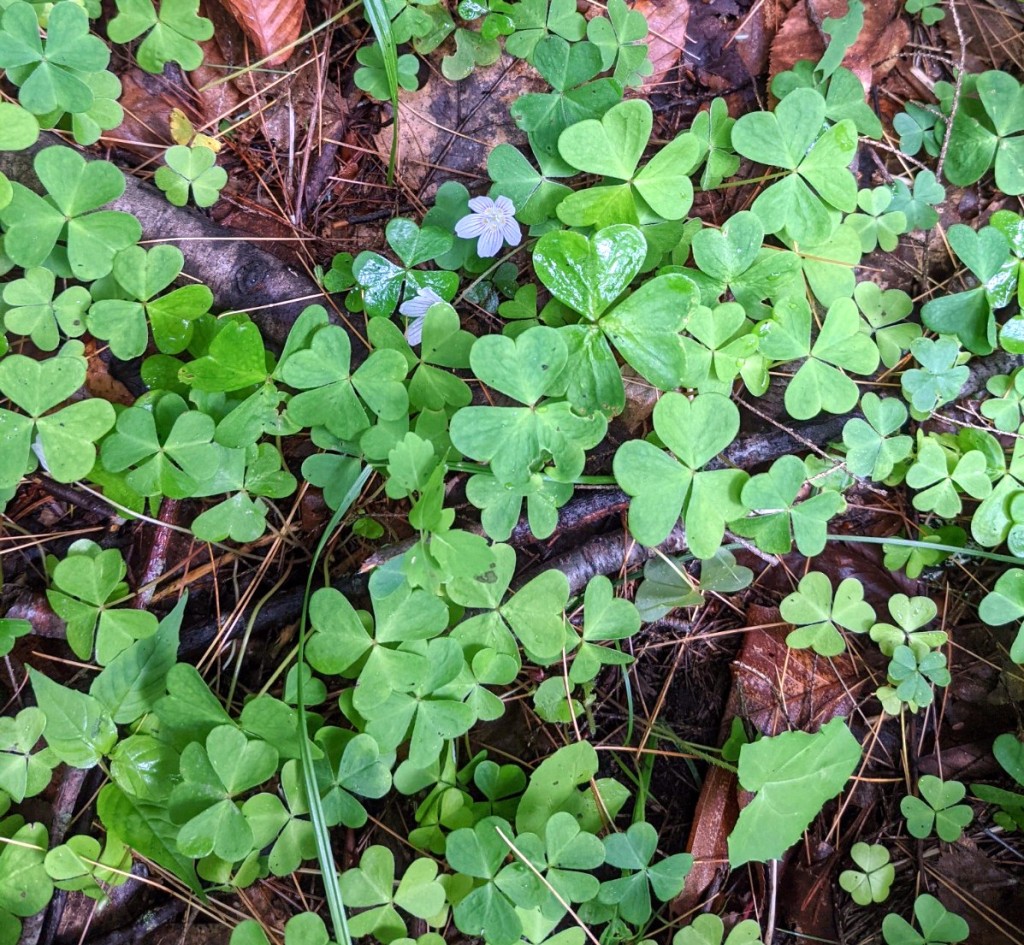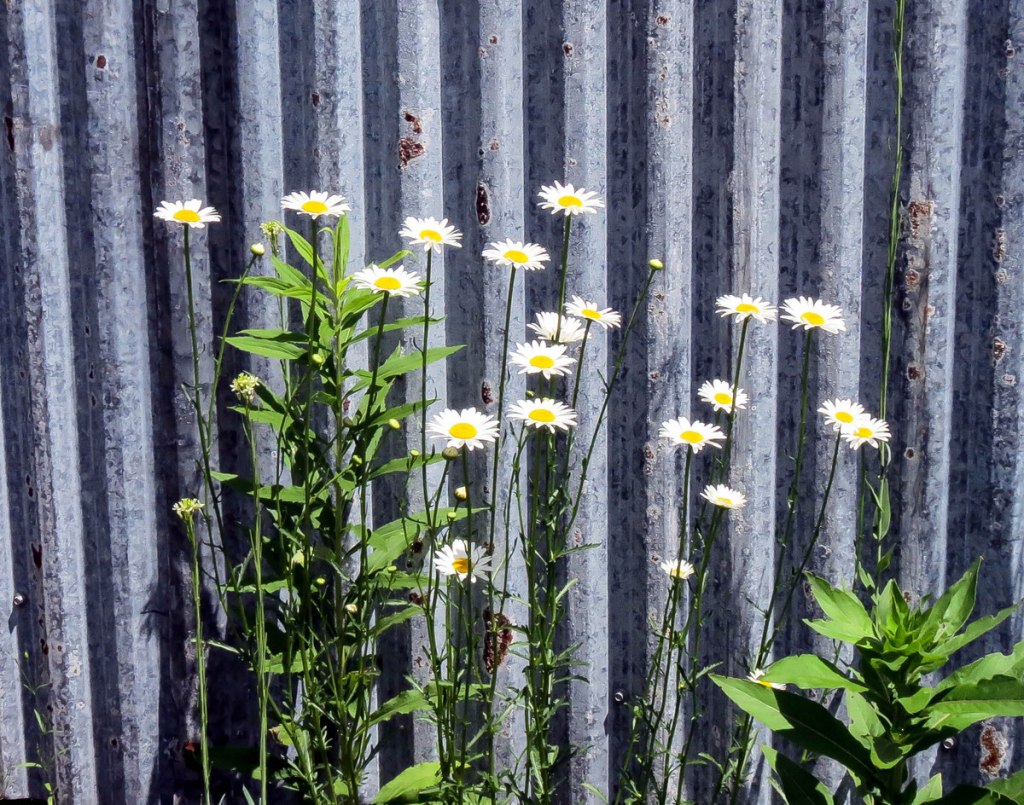
It’s peony time here in New Hampshire and this one caught my eye. It grows in a local park and I thought it was beautiful.

Tall thimbleweed’s (Anemone virginiana) white flower petals aren’t petals at all; they’re sepals and they don’t last very long. Almost every time I see them they have either turned green or are in the process of doing so, so seeing them in white is always a treat. There are usually plenty of yellowish stamens surrounding a center head full of pistils though. The seed head continues growing after the sepals have fallen off and it becomes thimble shaped, which is where the common name comes from. These flowers are close to the diameter of a quarter; about an inch. There is another plant called thimble berry but that is the purple flowering raspberry, like the one we’ll see a little later in this post.

Privet (Ligustrum vulgare) is in the same family (Oleaceae) as lilacs and that should come as no surprise when you look closely at the small flower heads. Privet is a quick growing shrub commonly planted in rows and used as hedging because they respond so well to shearing. Originally from Europe and Asia it is considered invasive in some areas. It has been used by mankind as a privacy screen for a very long time; Pliny the Elder knew it well. Its flexible twigs were once used for binding and the name Ligustrum comes from the Latin ligare, which means “to tie.”

Pretty little blue toadflax (Nuttallanthus canadensis) is one of our longest blooming wildflowers, starting in May and often going right up until a heavy frost. Since blue is my favorite color I’m always happy to see it. Its common name comes from its leaves, which look like flax leaves, and when a heavy enough insect lands on the protruding lip of the flower a (toad’s) “mouth” will open so the insect can get at the nectar which is found in the long, curved nectar spur at the rear of each blossom.

Motherwort’s (Leonurus cardiaca) tiny flowers grow in a whorl around the stem in the leaf axils. This plant, originally from Asia, is considered an invasive weed but I don’t see it that often and I don’t think I’ve ever seen more than 2 or 3 plants growing together. At a glance it might resemble one of the nettle family but the square stems show it to be in the mint family.It was brought to this country because of its long history of medicinal use in Europe and Asia. The ancient Greeks and Romans used motherwort medicinally and it is still used today to decrease nervous irritability and quiet the nervous system. There is supposed to be no better herb for strengthening and gladdening the heart, and it is sold in powdered and liquid form. Note the second part of its scientific name: cardiaca.

The tiny flowers of motherwort are very hairy and look like a microscopic orchid. They’re also very hard to get a good shot of because of both their size and color. It usually takes me many tries to get a shot like this and it did this year.

I’ve shown partridgeberry (Mitchella repens) here many times over the years but this time I was quick enough to catch its pretty pink buds. Partridgeberry flowers always appear in pairs because they share a single ovary. If they’re pollinated they’ll produce a single red berry which will have two dimples on it, showing where each flower was. Partridgeberry is one of the lowest growing evergreen plants on the forest floor, hardly growing more than 3 or 4 inches high. Plants have a vining habit but do not climb. Instead they form dense mats by spreading their trailing stems out to about a foot from the crown.

The 4 petaled, pinkish, fringed, fragrant, half inch long partridgeberry flowers appear in June and July. The berries remain on the plant for long periods unless eaten, and can often still be found the following spring. Other names for this plant include twinberry and two-eyed berry. I like the leaves as well, which always look as if they were hammered out of a sheet of metal.

Purple flowering raspberry (Rubus odoratus) is in the rose family and the 2 inch wide flowers might look like a rose at a glance. It has no thorns like roses or raspberries, however. The fruit looks like a large raspberry but is on the tart, dry side and it gives the plant the name of thimble berry. It has large, light gathering, maple shaped leaves and is quite shade tolerant. Flowering raspberry landed me a job once when an elderly gentleman said “If you can tell me what the plants in this hedge are, I’ll hire you.” I said “Flowering raspberry,” and he said “You’re hired.” He was one of the nicest people I’ve ever known and I worked for him for many years after that hedge side meeting.

I was shocked when I stopped along a road to see lupines and found sweet William (Dianthus barbatus) growing with them, presumably seeded there by the highway department along with the lupines. Sweet William is an old fashioned garden favorite which I’ve always loved, especially for its spicy sweet fragrance. It is a biennial plant native to southern Europe and parts of Asia, and though it is said to be naturalized in this country I’ve never seen it outside of a garden until now. Nobody seems to know how it got its common name but with flowers that pretty I doubt anyone really cares.

Black elderberries (Sambucus nigra) have just started blooming along streams and on the edges of swamps. The bushes can get quite big with large white, flat flowerheads.

Each flower in a black elderberry will become a small purple berry (drupe) so dark it is almost black. A drupe is a fleshy fruit with a single seed like a peach or cherry. Native Americans dried the fruit for winter use and soaked the berry stems in water to make a black dye for basketry.

If you take the time to stop and really look at an elderberry you find that the large, flat flower heads are made up of hundreds of tiny, beautiful flowers. Each flower is only 1/4 inch across, and has 5 white petals or lobes, 5 yellow tipped stamens and 3 very small styles that fall off early after blooming.

The best thing about humble little pineapple weed (Matricaria discoidea) is how it will immediately put a huge grin on a child’s face when it is crushed and put under their nose. They just can’t believe what they’re smelling. Some think this flower looks and smells like chamomile with all the petals missing, and I’ve heard it makes a good tea. It is a native plant that was used extensively by Native Americans. Next time you see one why not give it a sniff? It’s like taking the fast train right back to childhood.

Knapweeds can be tricky to identify but I think this is brown knapweed (Centaurea jacea,) which is considered highly invasive in parts of the country. Even so it is used by the highway department to stabilize embankments as this plant was doing. I’ve always liked its unusual flowers.

The irises have been truly remarkable this year. On and on they went, blooming like I’ve never seen, but I’m afraid it’s time to say goodbye for this year. It was a pleasure.

We have at least two types of dewberry growing here, northern or common dewberry (Rubus flagellaris) and swamp or bristly dewberry (Rubus hispidus) Each grow a black berry which is similar to a small black raspberry. I see bristly dewberry like that in the photo almost everywhere I go, along trails and in forest clearings. Both plants are woody vines that can grow to 15 feet under optimum conditions, and both are prickly. Swamp dewberry as its name implies, likes slightly wetter places.

White avens (Geum canadense) has started blooming a little early this year. Each flowers is about a half inch across with 5 white petals and many anthers. The anthers start out white and then turn brown and you usually find both on each flower. Each flower becomes a seed head with hooked seeds that will stick to hair or clothing. It’s a pretty little thing that is easy to miss, mostly because it resembles other flowers.

Moneywort (Lysimachia nummularia ) is a low growing, vining plant. It is also called wandering Jenny, creeping Jenny, running Jenny, wandering sailor, wandering tailor, creeping Charlie, creeping Joan, herb two pence, and two penny grass. This plant was imported from Europe for use as a groundcover in gardens but has escaped and is now often found in wet areas. The common name moneywort comes from the round leaves resembling coins. (?) Moneywort is quite noticeable because its yellow flowers are quite large for such a ground hugging plant. One story about moneywort says that when snakes get bruised or wounded they turn to moneywort for healing. This gave the plant yet another common name: Serpentaria.

Snowberry flowers (Symphoricarpos albus) ended up in my too hard basket a couple of years ago after I had tried hundreds of times to get a decent photo of them. I admitted defeat and told myself I’d probably never try again, but then the other day I saw a fine shot of one on Mr. Tootlepedal’s blog and I knew it could be done, so I had to try again. Finally, after several years and many blown photos, here it is.

Here’s a closer look. This flower is so very small I’m really not sure how to describe it but it could easily hide behind a new spring pea. I was very surprised to see how hairy they were. Native snowberry is a rather old fashioned shrub in the honeysuckle family which has been grown in gardens for a very long time, probably for its shade tolerance. Each flower, if pollinated, will become a half inch diameter white berry which usually appear in clusters. The toxic berries persist through winter, as the common name implies. By the way, if you aren’t reading Mr. Tootlepedal’s blog you’re missing a real treat. He can be found over in the “Favorite Links” section on the right.

This is the first time treacle mustard (Erysimum cheiranthoides) has appeared on this blog because I’ve never seen it before now. It is a winter annual plant that was about a foot tall in this example but I’ve read that it can reach 2 feet. The pretty, bright yellow flowers are small at only 1/4 inch across, and their 4 petals point directly toward the mustard family. The long, slender seedpods also speak of the mustards.

Treacle mustard’s leaves are long and narrow, with widely spaced teeth along their margins. According to Wikipedia the plant is also called “wormseed mustard” from the way the seeds of the plant were once added to treacle to treat intestinal worms in children. Treacle is a syrup made from the liquid that remains after sugar is refined, or from molasses. It sounds like a spoonful of sugar helped the medicine go down.

Since it’s so close to the fourth of July I thought I’d end with some floral fireworks called tall meadow rue (Thalictrum pubescens.) The plant always blooms for the 4th and the orange tipped flowers always remind me of “bombs bursting in air.” Flowers on both male and female plants lack petals and have only anthers (male) or pistils (female). These are male flowers in this photo. Every year when independence day comes around I know it’s time to watch for these beautiful little things.
The garden of the world has no limits, except in your mind. ~Rumi
Thanks for coming by.
























